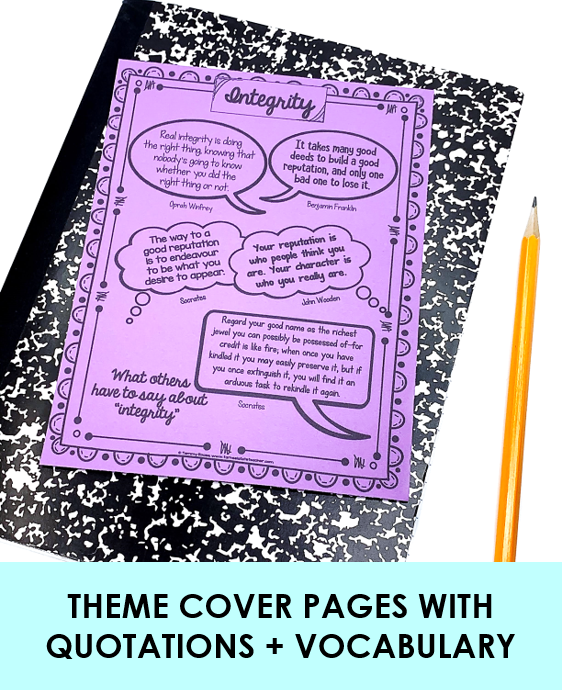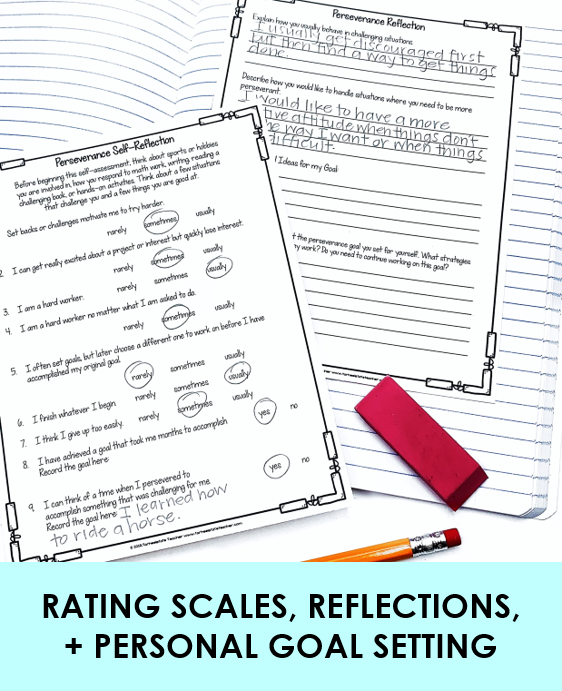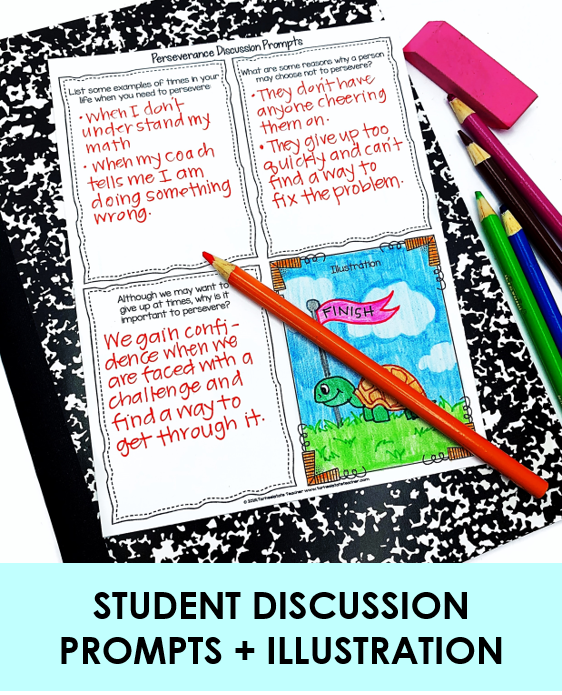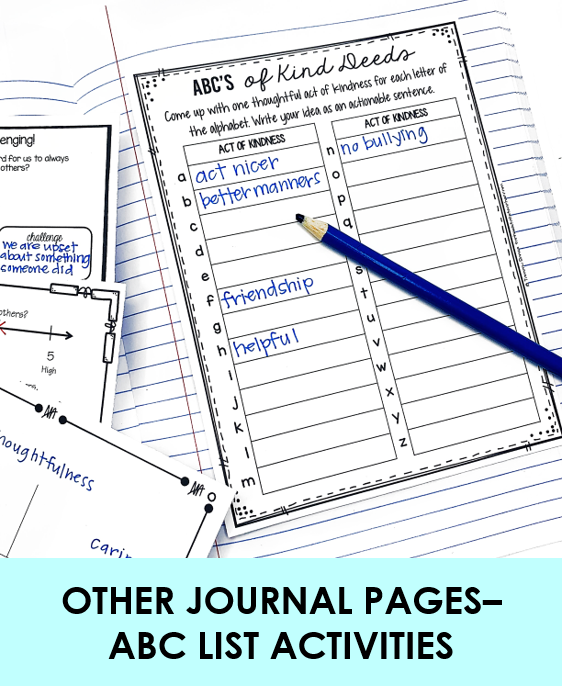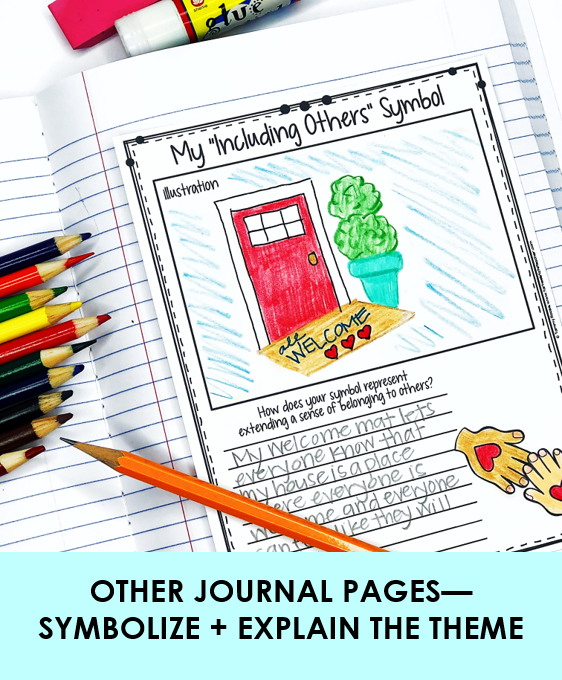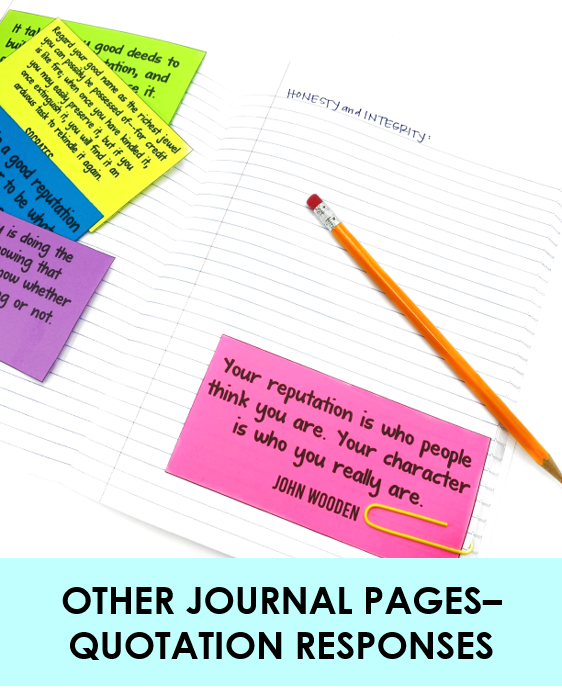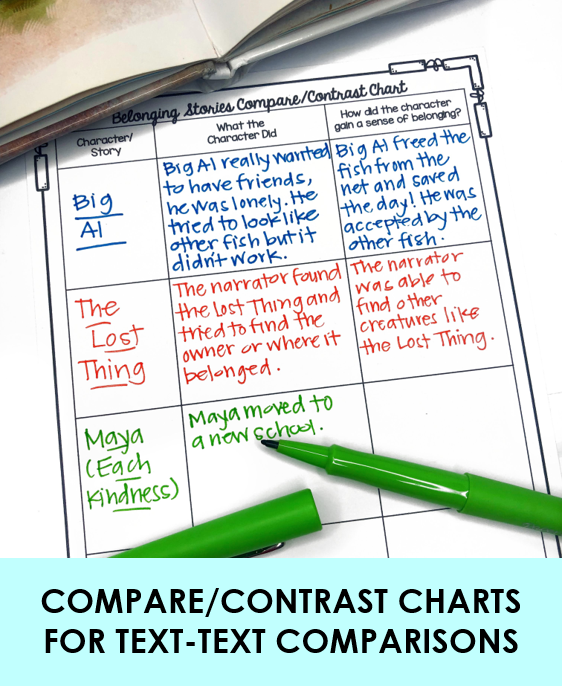A Look Inside Students Morning Meeting Notebooks
Let’s talk about one of our favorite teaching topics—school supplies! Specifically, morning meeting notebooks. Notebooks for journaling and reflection are an important tool for my students during our morning meeting lessons and discussions.
I am often asked how I set up and organize my morning meeting notebooks, what I include in them, and how I use and help students manage them. This post attempts to answer all those small, but very important questions!
As teachers, we all know that how we choose to organize something at the beginning of the year can make a big impact on whether or not it's successful throughout the year. I have tried a few different set-ups for my morning meeting notebooks and have learned lessons along the way. Hopefully some of these will save you the time and frustration as you make decisions about your own students’ morning meeting notebooks!
FIRST, WHAT TYPE OF NOTEBOOK DO I USE FOR MORNING MEETING?
You’ve got lots of options to consider—spiral notebooks, binders, composition notebooks, or good ole copy paper.
If you want students to manage inserting new journal pages during your lessons, you could use a 3-pronged folder or binder. Similarly, you could use a spiral notebook and have students glue in their reflection and activity pages.
Printing all of the journal pages you plan to use and double-stapling them on the side so students have a little morning meeting booklet is another option that works, too! Obviously, student materials are a personal decision and all options can definitely work with a little pre-planning on the management side and careful training of students.
Me? I use marble composition notebooks— I am kind of addicted to them and use them for each of my 17 social emotional learning topics during morning meeting throughout the year.
I like the set up of composition notebooks for morning meeting journals because they give me more flexibility than a journal that has been pre-stapled together or a binder where students place their reflection and activity sheets. Composition notebooks give my students immediate access to notebook paper where they can jot down a response to anything I ask them to respond to. This FAST access to notebook paper is a huge timesaver, since I regularly get inspired with an idea for a discussion or written response that wasn’t part of my original plan. Composition notebooks allow for that flexibility!
WHAT GOES IN MORNING MEETING NOTEBOOKS?
My morning meeting plans and routines have shaped themselves over the years and yours will too. I am currently using a theme-based, literature-focused morning meeting that incorporates picture book read alouds, student reflection, discussions, activities to inspire students to engage with the topic in different ways, and analysis of related quotations.
All of the theme sets for morning meeting include a theme cover page with quotations, a theme cover page with key vocabulary, self-assessment and reflection prompts, 4-Quadrant discussion pages, and other journal activities depending on the topic.
If you look inside students notebooks, you’ll find:
📓 venn diagrams comparing empathy and sympathy
📓 reflections on how to handle different emotions
📓 inspiring quotations and illustrated mantras
📓 responses to role-plays and scenarios when learning about conflict resolution, compromise, or friendship
📓 brainstorms to address the challenges of different topics such as integrity, perseverance, and responsibility
📓 compare and contrast charts to help us identify text-to-text connections among books we read about kindness, courage, or gratitude
and SO much more!
ORGANIZATIONAL TIPS FOR MORNING MEETING NOTEBOOKS - Don’t just press “print”!
I find that a “one size fits all” approach isn’t always the best when printing journal pages for my students’ notebooks. I recommend taking a look at all of the activity pages to decide which ones you plan to use, consider which pages need to be printed and which ones you would be able to display on your interactive white board and allow students to copy into their notebooks (i.e. short journal prompts or quotation responses). You’ll save paper that way and avoid having notebooks full of unused pages.
In the past, I have used the “multiple pages” option when printing my journal pages to get the sheets in a ½ size format that fits into a composition notebook. I suggest printing a few pages in full-sized and ½ sheets to see what spacing format you think would be best for your students.
Sometimes this option is perfect for certain journal activities, while other times you’ll want to print the whole page to give students enough space to write on the pages—for instance, my students need full sized pages when they fill-in the compare and contrast charts.
When you do have pages that you want to print in full size, you can still teach students how to easily manage gluing the pages into their composition notebooks. I have my students fold the page in half, glue one half of it down, and then fold the page into their journal. This way papers aren’t hanging out of notebooks (eww!), students can open the page up when they need it, and they can fold it back in when they're finished, keeping their journals neat and tidy.
ROUTINES AND PROCEDURES TO CONSIDER
Decide where you want the morning meeting notebooks to live. You may want to keep the notebooks in a bin where students can access them quickly on their way to the meeting space so you don’t have to worry about time being wasted by students digging around in their desks when it’s time to gather. Consider what materials you expect students to bring with to morning meetings. Will it be the same every day or is there a designated place for them to check what they will need before joining the group? Deciding on and teaching students these routines can add precious minutes to your morning meetings.
Keep other necessary materials near your meeting space. For me, this includes a cup of extra pencils (because we know someone will need one from time to time) and a basket of glue sticks. I may also keep copies of the upcoming journal pages near this meeting space for easy access—but typically, students are directed to add journal pages to their notebooks in their morning message as they come in and get ready for class.
Consider whether you want parents and caretakers to see students’ morning meeting notebooks periodically. You may decide to send home notebooks once a week or at the end of a theme unit such as goal setting, responsibility, or gratitude so parents can see the community building themes students have been discussing.
If so, should you designate a place for them to sign, showing that they’ve seen the notebook? Do you want to put a log chart at the back of the notebook where they can sign and date? It’s up to you! And, something to consider carefully, as students may feel their notebooks are personal and not want to share too much with parents.
In the past, students’ caretakers have really appreciated the time I devote to social and emotional skills and sending notebooks home may be a great way to share the valuable lessons students are learning!
FREE MORNING MEETING NOTEBOOKS AND TEACHING RESOURCES
We all know that the beginning of the year is THE time to establish your expectations for your classroom community and how you want students to treat one another. I always start the year off with a unit focused on creating a sense of belonging for everyone.
Developing a classroom climate where students understand that it is their responsibility to help everyone feel like they belong is one of the most important goals I have on my to-do list for the first week of school. You can get my step-by-step lesson plans for belonging, bulletin board materials, decorative quote posters, and student journal pages for FREE.
DOWNLOAD YOUR FIRST MORNING MEETING UNIT FREE!
This free theme unit is packed with lesson ideas, student journal pages, discussion prompts, self-reflections, bulletin board materials, and more! YES! Everything you see below for the belonging theme is FREE!
If you prefer digital resources for morning meetings, I’ve got you covered with Google Slides versions of each theme set. Grab your FREE slides for belonging here.
My morning meeting routine is based on themes in literature. Some of the themes I address include belonging, kindness, compassion, perseverance, resolving conflict, integrity, growth mindset, compromise, responsibility, friendship, managing emotions, and quite a few more! You can check out the full theme sets below, but please be sure to grab your free belonging materials! I can’t wait for you to get a hold of them and try them out with your students!
Do you use morning meeting notebooks? I would love to hear in the comments how other teachers organize and use them with students!


